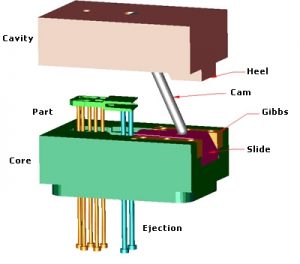Molding the Future: Exploring Plastic Injection Molding
Plastic injection molding revolutionized the manufacturing industry by providing a versatile and efficient method of producing high-quality plastic components. By injecting molten plastic into a mold under high pressure, manufacturers can create intricate shapes and designs with precision and consistency. This process is widely used across various industries to produce a wide range of products, from everyday household items to complex automotive parts.
Plastic injection molding involves several key steps, including the melting of plastic pellets, injection into a mold cavity, cooling to solidify the plastic, and ejection of the final product. The ability to mass-produce identical parts with tight tolerances makes injection molding a cost-effective solution for many manufacturing needs. With advancements in technology and materials, plastic injection molding continues to evolve, offering endless possibilities for innovation and customization.
History of Plastic Injection Molding
Plastic injection molding dates back to the late 19th century when John Wesley Hyatt invented the first injection molding machine. This invention revolutionized the production of plastic products by enabling faster and more cost-effective manufacturing processes. Initially used for producing simple items like hair combs and buttons, plastic injection molding quickly evolved to accommodate a wide range of products across various industries.
Over the years, advancements in technology and materials have propelled plastic injection molding to the forefront of modern manufacturing. The process involves injecting molten plastic material into a mold cavity at high pressure, allowing it to cool and solidify before being ejected as a finished product. This precision and efficiency have made plastic injection molding a preferred method for mass production across industries such as automotive, aerospace, and consumer goods.
Today, plastic injection molding continues to play a vital role in shaping the future of manufacturing. With innovations like 3D printing, automation, and sustainable materials, the industry is constantly evolving to meet the demands of a changing world. As technology progresses and environmental consciousness grows, plastic injection molding remains a versatile and adaptable process that will continue to innovate and drive progress in various sectors.
Modern Applications
Plastic injection molding has revolutionized the manufacturing industry across various sectors. In the automotive industry, plastic components produced through injection molding are widely used in vehicle interiors, exteriors, and under-the-hood applications. quick turn injection molding are known for their durability, precision, and cost-effectiveness, making them essential in modern vehicle design.
Another prominent application of plastic injection molding is in the production of consumer electronics. From smartphone casings to intricate components inside electronic devices, injection-molded plastics play a crucial role in delivering aesthetically pleasing and functional products to consumers. The ability to customize designs and produce parts with tight tolerances has made injection molding the preferred method for manufacturing electronic components.
The medical industry also benefits significantly from plastic injection molding technology. Medical devices, equipment housings, and custom components are often manufactured using this method due to its ability to produce sterile, high-quality products that meet the stringent standards of the healthcare sector. Injection molding provides a reliable and efficient way to produce medical-grade plastics essential for patient safety and well-being.
Future Innovations

One area where plastic injection molding is set to see exciting advancements is in the realm of sustainable materials. Researchers and manufacturers are increasingly exploring bio-based and recycled plastics as alternatives to traditional petroleum-based resins. Incorporating these eco-friendly materials into the injection molding process can help reduce the environmental impact and carbon footprint of plastic manufacturing.
Advancements in technology, such as the integration of AI and robotics, are also poised to revolutionize plastic injection molding. These cutting-edge systems can optimize production processes, enhance precision, and reduce waste. By harnessing the power of automation and smart manufacturing, companies can streamline their operations and achieve higher levels of efficiency in the production of plastic components.
Looking ahead, 3D printing integrated with injection molding processes holds great promise for customization and rapid prototyping. This hybrid approach allows for the creation of intricate and complex designs that might be challenging to achieve with traditional molding methods alone. By combining the strengths of both technologies, manufacturers can unlock new possibilities for innovation and product development in the ever-evolving landscape of plastic injection molding.